Deimos: Unveiling the Secrets of Mars' Smallest Moon
Deimos, moon of Mars observed by MRO probe
Deimos, against this, the smaller of the two moons of Mars was photographed on 21 February 2009 by the American probe MRO (Mars Reconnaissance Orbiter). The American probe, launched on 12 August 2005 from the Cape Canaveral in Florida, helping to enrich our knowledge about the planet Mars, as the history of its water, its climate or its subsoil. It also sends us from time to time, beautiful photos of her satellites Phobos and Deimos.
Deimos is not spherical but ovoidal, like an asteroid deformed.
This small moon of Mars from a few kilometers square (15 × 12 × 10.4 km), appears to be completely smooth and very little craterized. This is due to its small size and the layer 100 m thick rock spray, which covers.
The orbital period of the small moon is 1.26244 days, which means it goes around Mars in 1 day, 6 hours, 17 minutes and 54 seconds.
Image: Deimos is the smaller of the two satellites of Mars. These photos were taken on 21 February 2009, the camera HiRise (High Resolution Imaging Science Experiment) of the Mars Reconnaissance Orbiter.
Deimos is not spherical, its dimensions are 15 × 12 × 10.4 km. The photograph below shows a surface against clear, but in reality, the surface very dark reddish black, has an albedo of 0.07.
Deimos has a smooth surface because the layer of regolith (fine particles ejected during the impact of meteorites), which covers its surface with the exception of the more recent impact craters.
This object to dark red, similar to Mars and Phobos, the moon of Mars.
Image Credit: NASA / JPL-Caltech / University of Arizona. The resolution is 20 meters per pixel.
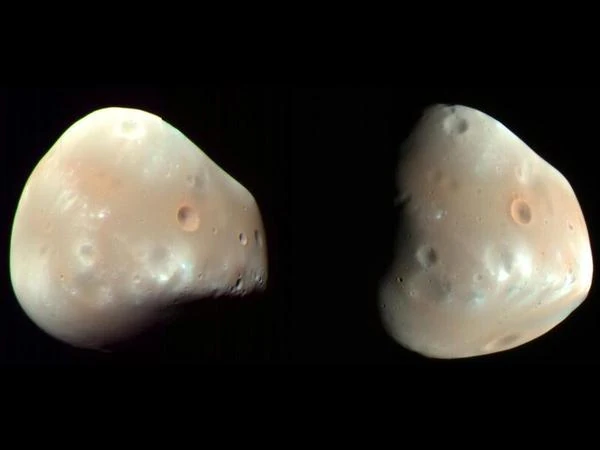
Fear and terror
The names of the two moons of Mars are derived from Greek mythology, Phobos (Fear) and Deimos (Terror) both twins that Ares was the god with the goddess Aphrodite.
Deimos is covered with a thick layer of particles ejected during the impact of meteorites, which blurs its relief by filling its craters gradually. We can not find this feature on Phobos, Mars closest where dust is influenced by tidal forces of Mars.
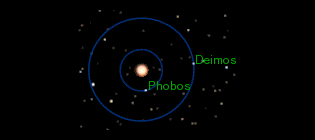
The two satellites could come from the asteroid belt, which, passing near the planet Mars, were captured.
Deimos is at a distance of 23 460 km of Mars and Phobos to 9 377 km.
The gravity on the surface of Deimos is very low (0.0039 m/s-2). Its density is only 2.2 g/cm3.
Its rate of release is 22 km/hour or 6 m / s) which would allow a man to leave the soil of Deimos simply ran.
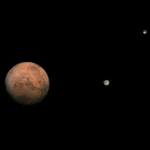 Phobos and Deimos: Mars’ Mysterious Companions
Phobos and Deimos: Mars’ Mysterious Companions
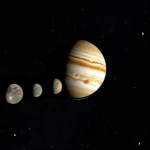 The Moons of Jupiter: A Celestial Archipelago of Over 90 Diverse Worlds
The Moons of Jupiter: A Celestial Archipelago of Over 90 Diverse Worlds
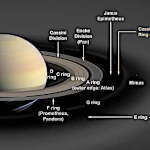 Saturn's Moons: Icy Worlds and Hidden Oceans
Saturn's Moons: Icy Worlds and Hidden Oceans
 Uranus' Moons: An Inclined Ballet
Uranus' Moons: An Inclined Ballet
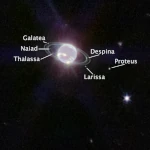 The Moons of Neptune: A Procession of Ice and Mystery
The Moons of Neptune: A Procession of Ice and Mystery  If the Moon Did Not Exist: Impacts on Earth and Life
If the Moon Did Not Exist: Impacts on Earth and Life
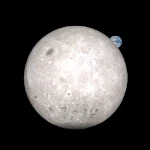 The Far Side of the Moon: The Hidden Half Revealed
The Far Side of the Moon: The Hidden Half Revealed 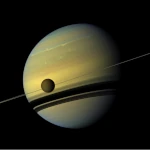 Tidal Effects in the Solar System
Tidal Effects in the Solar System 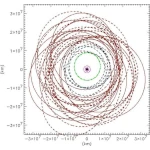 Moons in the Shadow: Jupiter's Most Discreet Satellites
Moons in the Shadow: Jupiter's Most Discreet Satellites  Moon Phases
Moon Phases  Apollo 8: The Photo That Shook the World
Apollo 8: The Photo That Shook the World 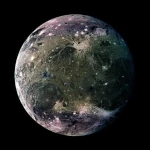 The largest objects in the solar system
The largest objects in the solar system  The Origin of the Moon: The Giant Impact Hypothesis
The Origin of the Moon: The Giant Impact Hypothesis 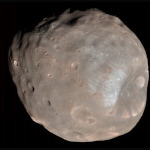 Phobos Facing Its Destiny: Collision or Breakup
Phobos Facing Its Destiny: Collision or Breakup  Europa: An Icy Jewel in Jupiter's Orbit
Europa: An Icy Jewel in Jupiter's Orbit 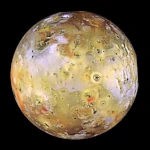 Io, Jupiter’s Moon: A World in Turmoil for 4.5 Billion Years
Io, Jupiter’s Moon: A World in Turmoil for 4.5 Billion Years 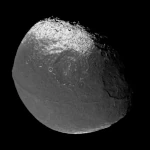 Iapetus: The Two-Faced Moon, Saturn's Icy Gem
Iapetus: The Two-Faced Moon, Saturn's Icy Gem 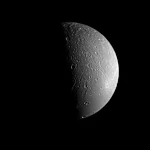 Dione: Saturn's Icy Moon with Buried Secrets and Frozen Landscapes
Dione: Saturn's Icy Moon with Buried Secrets and Frozen Landscapes 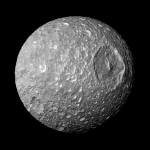 Mimas: The Moon with the Giant Crater, Saturn's Icy Sentinel
Mimas: The Moon with the Giant Crater, Saturn's Icy Sentinel  The Origins of the Moon: From Chaos to Formation
The Origins of the Moon: From Chaos to Formation  Pluto and its satellites
Pluto and its satellites 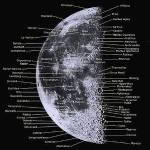 Craters of the Moon: Witnesses of the Solar System's History
Craters of the Moon: Witnesses of the Solar System's History  Hyperion, moon of Saturn
Hyperion, moon of Saturn  Eclipses explained by the plane of the lunar orbit
Eclipses explained by the plane of the lunar orbit  Titan and Dione: Saturn's Icy Sisters
Titan and Dione: Saturn's Icy Sisters 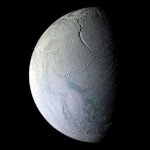 Enceladus: The Ocean Hidden Beneath the Ice
Enceladus: The Ocean Hidden Beneath the Ice 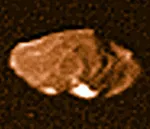 Amalthea, a block remnant of Jupiter
Amalthea, a block remnant of Jupiter 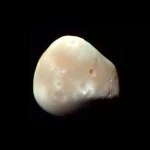 Deimos: Mars' Tiny and Mysterious Moon
Deimos: Mars' Tiny and Mysterious Moon  Moon Illusion
Moon Illusion 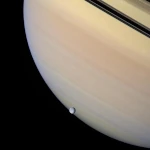 Rhea and Saturn’s Rings: Orbital Dynamics
Rhea and Saturn’s Rings: Orbital Dynamics 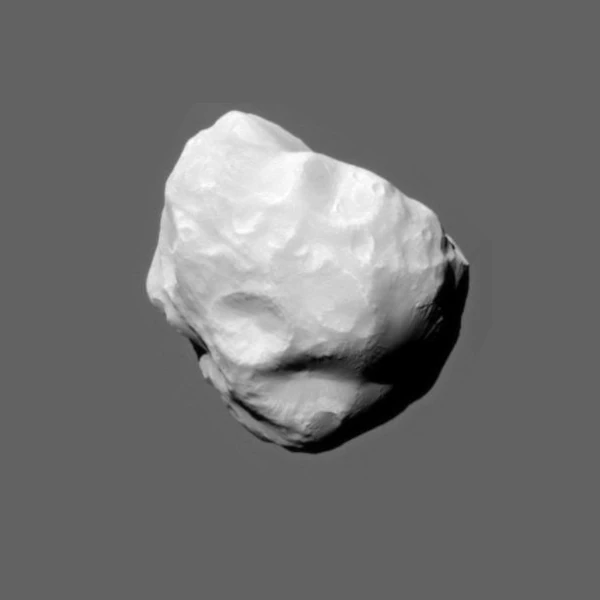 Helen, the small Trojan moon of Saturn
Helen, the small Trojan moon of Saturn  Titania: What Space Probes Revealed to Us About Saturn's Moon
Titania: What Space Probes Revealed to Us About Saturn's Moon  The Blue Moon
The Blue Moon 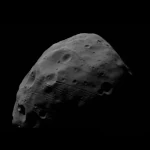 Phobos: The Doomed Satellite of Mars
Phobos: The Doomed Satellite of Mars 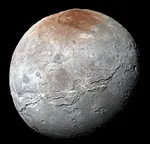 Charon and Pluto: An Inseparable Duo
Charon and Pluto: An Inseparable Duo  Roche Limit or Roche Radius
Roche Limit or Roche Radius  When the Moon Becomes Giant: The Supermoon Phenomenon
When the Moon Becomes Giant: The Supermoon Phenomenon 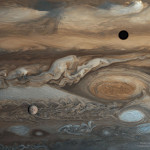 The Satellite Worlds of the Solar System: Hidden Oceans, Ice Volcanoes, and Fleeting Atmospheres
The Satellite Worlds of the Solar System: Hidden Oceans, Ice Volcanoes, and Fleeting Atmospheres 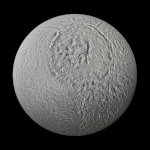 Tethys: a silent world frozen in ice
Tethys: a silent world frozen in ice 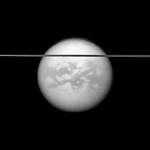 Titan: a hazy world potentially favorable to prebiotic life?
Titan: a hazy world potentially favorable to prebiotic life?  The Dance of Prometheus: Between Light and Shadow
The Dance of Prometheus: Between Light and Shadow 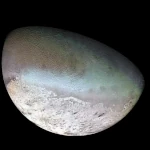 Triton, Neptune’s Rebellious Moon: A Gravitational Capture
Triton, Neptune’s Rebellious Moon: A Gravitational Capture  Miranda: Uranus' Moon of a Thousand Scars
Miranda: Uranus' Moon of a Thousand Scars 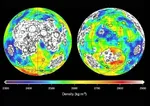 Mascons: Lunar Gravitational Anomalies
Mascons: Lunar Gravitational Anomalies